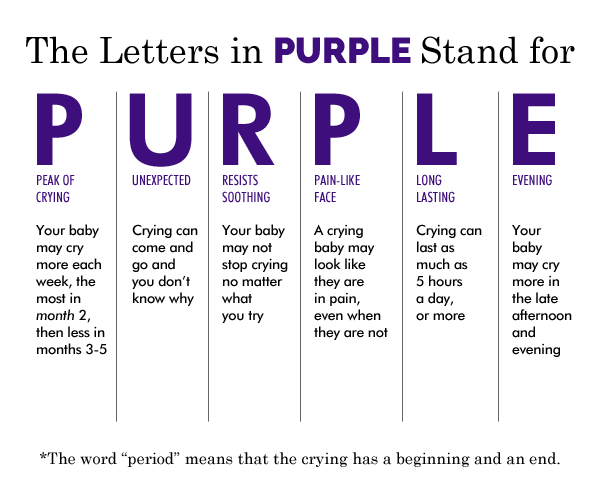The Injury Prevention Program at Children’s is committed to decreasing the incidence of traumatic injuries through multi-faceted, community-based child safety education programs.

Injuries are the leading cause of death and disability to children in the United States. The good news is that many of these injuries and deaths are preventable.
Dedicated to Keeping Kids Safe
Children’s Injury Prevention Staff are available to help inform parents, educators, and child safety advocates about injury prevention by:
- Teaching families about child safety, injury risks, and prevention
- Evaluating solutions for injury risks
- Developing effective means to increase safety practices in our community
- Providing child safety seats, helmets, and injury prevention education
- Promoting leadership in child safety through effective and sustainable partnerships
Car Seat Safety
Estimates say eight out of 10 child car seats are improperly installed. Young children who are correctly restrained in child safety seats have an 80% lower risk of fatal injury in the event of a motor vehicle crash than those who are unrestrained.
-
More About Car Seat Safety
Car Seat Fittings and Safety Checks
Car Seat Safety Checks educate parents on how to properly use a child car seat. Nationally certified child passenger safety technicians check car seats for families, fit children properly in their car seats, teach parents how to install a car seat and provide passenger safety information.
Car Seat EventsCar Seat Check Protocols and Pointers
• Certified car seat technicians inspect your seat and teach you how to safely install your car seat(s).
• No appointment necessary.
• Free – donations are accepted and appreciated.
• Plan on spending 30 minutes per car seat.
• Bring children, if possible. Expectant parents are welcome.
• Bring a friend/relative to help, if possible.
• Bring the vehicle owner’s and car seat manuals.Events are staffed by volunteers who generously donate their time. The event line may be cut off prior to posted stop time, and attendees waiting will be referred to a future event or an inspection station listed below.
Can’t make it to a checkup event? Call one of the inspection stations below for assistance. Please plan ahead. Most inspection stations are booked two weeks in advance and are by appointment only.
Children’s Nebraska
84th Street and West Dodge Road
402-955-8090Sarpy/Cass Safe Kids @ Sarpy/Cass Department of Health and Wellness
701 Olson Drive, Suite 101, Papillion
402-339-4334Replacing Your Child’s Car Seat
Is your infant or child safety seat still safe to use? If it has been in an accident or its expiration date has passed, probably not.
Discontinue using a car seat if it has been in a moderate or severe crash. The forces in a collision can weaken the safety structures in a seat and sometimes cause unseen damage. This hidden damage may keep the car seat from properly protecting the child in future crashes. Seats that were in a minor crash may still be safe to use. If you are unsure, call the manufacturer of the seat.
You also should not use secondhand car seats. The seat may have been in an accident and have damage that you cannot see, or the seat may have been recalled.
Car Seat Recycling
Car seats do have expiration dates. Exposure to extreme conditions like heat and cold breaks down the plastic over time. Check the tag or bottom of the seat for the expiration date. If the seat is past the expiration date, you should replace it. If you don’t see an expiration date, use six years after the manufacture date as the expiration date.
When your child has outgrown a car seat or it’s no longer safe to use, consider recycling it. At least 90 percent of car seat material can be recycled.
Email [email protected] for the next recycling event.
Mobile Apps for Smart Phones
NHTSA’s SaferCar app allows users to search its 5-Star Safety Ratings for vehicles by make and model, locate car seat installation help, file a vehicle safety complaint, find recall information and subscribe to automatic notices about vehicle recalls. Click here to learn more about the National Highway Traffic Safety Administration’s programs and offerings.
Child Passenger Safety Technician Training
You can join the thousands of other Child Passenger Safety Technicians (CPST) who empower parents and caregivers to properly secure their children in motor vehicles and keep them safe on the road. CPS Technicians put their knowledge to work through a variety of activities including in-vehicle child safety seat checks and short community presentations.
National certification helps to enhance the credibility and professionalism of all child passenger safety advocates and practitioners, the child passenger safety community and the organizations and programs that use the services of certified CPS Technicians.
Bike Safety
More children ages 5 to 14 are seen in emergency rooms for injuries related to biking than any other sport.
-
More About Bike Safety
Bike riding is a fun activity and great way to get exercise but a properly fitting helmet is the key to safety when riding a bike. Children and adults should wear a helmet when riding a tricycle, scooter, bicycle, skateboard … anything with wheels.Parents, be a great role model for your kids and wear your helmet!
Interested in hosting a bike safety event? Click the button below and complete event request form.
Request Injury Prevention Staff For An Event

Helmets can reduce the risk of severe brain injuries by 88% – yet only 45% of children 14 and under usually wear a bike helmet.
Playground Safety
Playgrounds are great places for children to get exercise and have fun, but it’s important for parents and caregivers to take steps to protect youngsters from potential dangers.
“Most playground injuries involve minor cuts and scrapes, but they can also be much more serious. We want kids to be outside playing and having fun, but we want to help them do it safely.”
-Jaime Mukherjee, Injury Prevention Specialist at Children’s Nebraska
-
More About Playground Saftey
The American College of Emergency Physicians (ACEP) reports more than 200,000 children visit emergency departments each year with head, neck and spinal cord injuries; broken bones; internal bleeding; and other life-threatening injuries related to playground accidents.Keep children safe at the playground by following a few simple guidelines:
- Supervision: Adults need to be present when kids are playing outside. A lack of supervision is a contributing cause of many playground injuries.
- Age Appropriateness: Children should only play on equipment that is appropriate for their age and level of development.
- Fall Surfacing: The playground surface should act as a cushion in the event of a fall. Asphalt, dirt, concrete, and even grass are not considered safe surfaces underneath play equipment. A one-foot fall onto concrete can cause a concussion.
- Equipment Maintenance: Make sure the equipment isn’t broken or damaged. Check for missing components, glass, rocks or debris. And, look for gaps or openings that could allow a small child to slip through, or a child’s head or body to become trapped.
Water Safety
Drowning happens silently. Contrary to popular belief, most drownings do not involve loud thrashing or verbalization of distress. Education about water safety is key to decreasing the numbers of children who drown.

Fatal drowning is the leading causes of death for children ages 1 to 4.
-
Water Safety Guidelines
The Injury Prevention team urges you to talk about water safety with your children, and to follow these guidelines:- Actively supervise your children around water at all times. Kids should never swim or play around water by themselves.
- Teach children to never go near or in water without an adult present.
- Enroll your child in swimming lessons. Children as young as 6 months can be enrolled in Float 4 Life lessons which teach young children to roll to their back so they can breathe, float, and get to the side until help arrives. The American Academy of Pediatrics recommends swimming lessons for children as young as 4 years of age.
- If you have an above ground pool, be sure to remove the ladder after each use so as to prevent a child climbing into a pool when unsupervised.
- Make sure your pool has four-sided fencing and a self-closing, self-latching gate to prevent a child from wandering into the pool when unsupervised.
- Install a door alarm, a window alarm or both to alert you if a child wanders into the pool area unsupervised.
- Empty buckets, containers and wading pools immediately after use. Store them upside-down and out of a child’s reach.
- Learn CPR and know how to respond to water emergencies.
While most parents are aware of these guidelines, incidents still can – and do – happen. Please stay alert.
Gun Safety
Among US Households with children, around 1 in 3 have a firearm present. If you’re a gun owner and you have a child in your home, gun safety is a top priority, and it can start with a few simple steps.
-
More About Gun Safety
- Keep guns locked up, unloaded, out of sight, and out of reach.
- Store ammunition separately, and also keep it locked up, out of sight and reach.
- Wherever you store your gun, keep lock combinations and keys hidden.
- Put child-resistant gun locks on all of your firearms.
- Don’t ever leave a gun unattended — even for just a minute — unless it is locked up.
- Do not keep guns and ammunition in your home if you no longer need them. Talk to local law enforcement to learn how to dispose of guns and ammunition safely.
- If your child or teenager is depressed or has thought about or attempted suicide, safely remove all firearms and ammunition from your home.
Whether or not you own a gun yourself, you can still take steps to ensure gun safety:
- Explain to your kids that guns they may see in movies or video games are different than real ones.
- Teach them to tell an adult immediately if they see a gun and never to touch one themselves.
- Check with parents and family members your child spends time with to make sure they’re following gun safety precautions.
Safe Kids Douglas County
We partner with several community organizations in Safe Kids Douglas County — an initiative of the Trauma Department at Children’s that aims to keep children safe from avoidable injuries.
Collaborators in this initiative include:
- Child Safety Task Force: Conducts car seat checkup events and provides education on safe car seat use
- Home Safety Task Force: Provides education on home safety issues, such as burns, falls, poisoning, fires, and choking
- Pedestrian/Bike Safety Task Force: Provides free helmets to children, performs bike helmet fittings, and educates the community about pedestrian and bike safety
- Water Safety Task Force: Provides education on drowning prevention to children and parents
ThinkFirst
Children’s Nebraska is a ThinkFirst Chapter. ThinkFirst is an award-winning, evidence-based national injury prevention program that helps children learn to reduce their risk of injury.
Use your mind to protect your body! Drive safely, buckle up, wear protective sports gear, avoid violence, don’t dive in shallow water, and avoid falls. Think first!
—ThinkFirst
-
More About ThinkFirst
ThinkFirst offers 3 educational programs:- ThinkFirst For Kids
- ThinkFirst For Youth
- ThinkFirst For Teens
Interested in hosting a ThinkFirst event? Click the button below and complete event request form.
Request Injury Prevention Staff For An Event
Please indicate which event you are interested in on the form using the drop down menu.
Recall News and Alerts
Safety often begins with knowing what is inside your family’s home. Whether it’s a bargain from a neighbor’s garage sale, a new toy, even meat or packaged food you just brought home from the grocery store, hazards can be unexpected.
To help your family stay safe, Children’s has assembled a list of organizations which play a role in the issuance and communication of important recalls and safety alerts.
-
Organizations That Issue Recall And Safety Alerts
The Consumer Product Safety Commission (CPSC) oversees safety and recall efforts involving a broad range of products including furniture, toys, appliances, and electronics. To view recalls, or to submit a concern about a specific product, visit the CPSC website.The U.S. Food and Drug Administration (FDA) maintains a comprehensive list of alerts and recalls affecting many food and health products.
Recalls of meat, such as ground beef, poultry, and egg products, are logged and issued by the U.S. Department of Agriculture. An active list of such recalls is available on the USDA website.
Automotive safety information including vehicle recalls, defect investigations and concerns with child passenger restraint systems are available from the National Highway Traffic Safety Administration (NHTSA).
In an effort to streamline the recall reporting process, the U.S. government has created the Recalls.gov website to better educate American consumers. The site is billed as a “one stop shop” for recall information.
Abusive Head Trauma
Abusive Head Trauma (AHT) or Shaken Baby Syndrome (SBS) are terms used to describe the signs and symptoms that are the result of violently shaking and/or impacting of the head of an infant or small child. As part of Injury Prevention, we promote the use of the Period of PURPLE Crying, a prevention initiative for SBS/AHT created by the National Center on Shaken Baby Syndrome.
-
More About The Period Of PURPLE Crying
The Period of PURPLE Crying is an evidence-based program aimed at helping parents and caregivers understand that early increased infant crying is a normal part of every infant’s development, and reducing the incidence of SBS/AHT.

A program packet includes a 10-page booklet, a parent reminder card, a 10-minute PURPLE Crying video and a 17-minute Crying, Soothing, Coping: Doing What Comes Naturally video.
For more information about the Period of PURPLE Crying or to receive a complimentary packet of program materials please contact Children’s Trauma Injury Prevention Coordinator at 402-955-6815. Visit www.purplecrying.info for more information.
